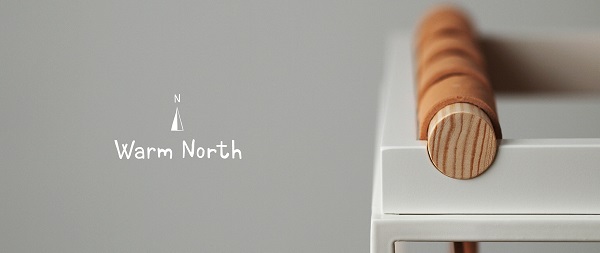Designer of the month – Aap Piho
Designer Aap Piho who is behind design and production company Warm North started off as interior architect. After studying in EKA and working as an interior architect for over ten years he decided to study industrial design in Netherland’s Royal Academy of Arts and design and engineering in Tallinn University of Technology. In 2010 Aap founded design furniture company Maast Furniture with two colleagues. Since 2012 he leads and develops his own design company Warm North that contributes to the local design and production potential. Two months ago Warm North made agreement with one of the Europe’s biggest and most competent design marketer MONOQI that has exclusive selling rights of the Warm North products in the whole world.
☞ What are you up to at the moment?
Right now there is just a lot of thinking to do and preparing for many things. What we do is a constant process and for the development to go smoothly, we need to think a few steps ahead. But for all the impatient people out there, I can just say that there will definitely be some more simple, in a way almost undersigned practical things.
☞ What are your five favourite design objects and why?
My respect and credit undoubtedly belong to objects that last in time. My long time favourite is a so-called foldable Directors Chair. Hints of which you can already recognize from antique Rome. It’s a great example of how the definition of a „beautiful object“ is created by clear functionality and optimal use of material. I wouldn't know what to add or take away from that. And believe it or not, it is quite hard to track down who is the author (designer) of that exact product, at least in the context that we are used to understanding it. So I like to recognize and see how design also evolves socially and culturally, where you don’t exactly have to congratulate one specific author. Archetypes develop and mature in time, assuming that they last in time. So I guess for me, good design is what lasts. Because lasting is hard and something to be acknowledged. For me the challenge is to develop products that I often daily forget about and bring those things to life again, considering our time and context. My other big favourite is the architect table. Also a multifunctional commodity that has an antique story behind it and has helped to build up cities, countries and cultures. Somewhat Da Vinci like, isn’t it? And still being a young man, I yet hope to notice the third, forth and fifth thing.
☞ Which problems design can and should solve in the world?
Problems are definitely different and changing in time. But without art, literature and design (from architecture to ceramics) the society probably wouldn't know how to dream, think without borders, false shame or pseudo fear of possible failure. If borders wouldn’t be crossed and our understanding widened, you and I still might be knocking nuts with a rock. But I personally see the role of a designer in a much more wider sense then just a field worker or someone who forms ergonomic, user friendly and functional commodities. We need a comfortable office chair not because we work by a table in the office but because working in offices is a widely spread working culture in this period of time. Now when a designer comes who can change that, and a designer can be able to do that, we ought to thank them. So a designer needs to master an instrument that has more strings then just material, user and a colour code.
☞ Which Estonian or international company you would like to work with?
No matter how much I would try to imagine the world without limits, I wouldn’t want to live in a world where people would lack the skill to do something with their hands. That’s why I hope that we will continue to have the strength and support to work with Estonian or regional artisans who would be able to make well thought through objects for our daily life. Those that we remember and know how to use already since childhood but yet are contemporary and constantly changing our everyday life better and more comfortable. At the same time maintaining our culture, traditions and aesthetics that are characteristic to our environment and that we in turn pass over to our kids. But to come back to daily issues and questions about business, I would love to collaborate with some local producers who would want to create value, see further then just a 3-month sourcing project and who would be willing to also show some patience in the progress.
☞ Can Estonia ever be a design country?
I believe so. Design is one of the most sustainable ways to understand and develop business. But for design in all it’s potential to create as many jobs in Estonia, the producers, engineers and designers need to have a lot more empathy. We need to give up our limited self-image through travelling (not to resorts), seeing the world, reading, listening to music and through the ability to see life as something way more simple, natural, organic and logical then people now know to do. Until then it seems to me that us here in Estonia right now are just developing a weird hobby and the true potential is not yet achieved. But good examples of using design in companies are little by little created. That gives hope that one-day design will be integrated deeply in our society, values and businesses.









